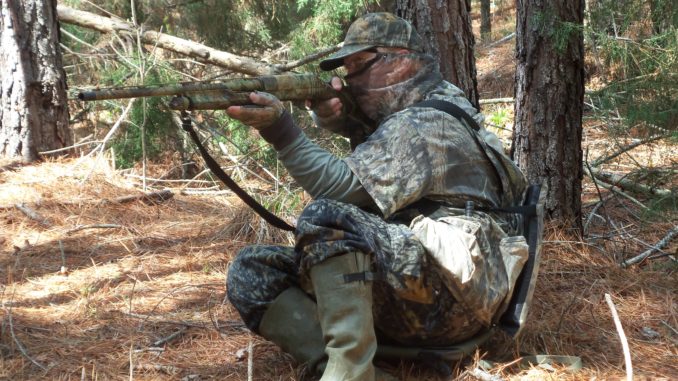
Faint calls can net big results
We sat against giant white pines on the edge of a mountain in the upper portion of Greenville County, my mission to listen to and learn from Charles Hudson of Travelers Rest S.C., who has been hunting turkeys for the better part of 50 years.
Hudson pulled from his vest a scratch call and began to move his hand across it in such a manner I wasn’t sure he intended to do anything. We were sitting about 10 yards apart, and I could see him well, but his calling was so faint I could just make out the sounds he was mimicking.
Just as I was wondering, a gobble echoed from the woods some 200 yards away. I looked, and Hudson smiled through his facemask. A long period of silence followed, and then another whisper from his call, this time a trumpet call, aka an “artificial wingbone”. Barely audible to human ears but plenty loud enough for ol’ Tom. After another gobble, there was the sound of wing beats as the gobbler flew the distance between us to get there faster. Just 20 yards after the first sound, the turkey lay flopping, 15 yards from my gun.
Hudson said that most of the mistakes hunters make when hunting old toms is calling too loud and too often. He has heard every call in the book, knows every voice and knows every hunter’s tactics. What few hunters are willing to do is to whisper, but when it comes to old gobblers, he said a whisper is better than a holler anytime.
“Listen to how the hens talk to one another and do the same thing.” Hudson said.
Soft yelps, purrs, whines, more purrs — the soft sounds of turkeys feeding and communicating. As simple as that sounds, hunters have a hard time mimicking what hens actually sound like in the wild. Hens seldom call as loud as most hunters; they are not looking to draw the attention of the neighbors, just their flock. So don’t just practice the sounds, practice the volume. More times than not when calling old toms, those that are three, four or even five years old, they will not gobble much, but they will come looking for a whisper. After all, what man doesn’t prefer a whisper over a yell?
Learning to use a box call softly is more difficult that screaming on it. The same is true of the diaphragm, tube or trumpet call. The slate and scratch box are the simplest to use softly, but even these can be difficult to tone down. Get quiet and get your bird.




Be the first to comment